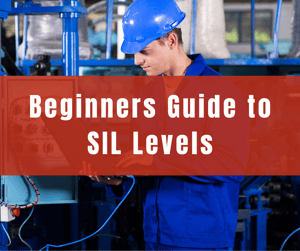-Aug-06-2023-08-44-35-6424-PM.png?width=300&name=Copy%20of%20ACD%20Image%20(2)-Aug-06-2023-08-44-35-6424-PM.png) During the normal course of work, manufacturers must take special care to monitor the safety of the employees, instruments, and processes involved. Therefore, Safety Implemented Systems (SIS) are installed in process plants to reduce the possibility of hazards and return certain processes to a safe state in the case of an emergency. An SIS is used to maintain the safety of one or more Safety Instrumented Functions (SIF) as a safeguard against possible hazards. However, in order to oversee the longevity and safety of an SIS, an appropriate Safety Integrity Level (SIL) must be established. Each hazard that necessitates the use of an SIS must be given a target Safety Integrity Level.
During the normal course of work, manufacturers must take special care to monitor the safety of the employees, instruments, and processes involved. Therefore, Safety Implemented Systems (SIS) are installed in process plants to reduce the possibility of hazards and return certain processes to a safe state in the case of an emergency. An SIS is used to maintain the safety of one or more Safety Instrumented Functions (SIF) as a safeguard against possible hazards. However, in order to oversee the longevity and safety of an SIS, an appropriate Safety Integrity Level (SIL) must be established. Each hazard that necessitates the use of an SIS must be given a target Safety Integrity Level.
What is a Safety Integrity Level (SIL)?
A Safety Integrity Level (SIL) is a standardized tool utilized by plant owners and operators to quantify safety performance requirements for hazard operations and assess the level of risk reduction provided by a Safety Instrumented Function. The SIL Level evaluates the tolerable/acceptable rate of an individual device. The SIL level number - ranging from 1 to 4 - is based on the amount of risk reduction needed to maintain an acceptable rate of failure. Each of the four levels of SIL represents an order of magnitude of risk reduction - the higher the level, the greater the impact of a failure. Therefore, the higher the SIL level, the lower the acceptable failure rate. SIL 4 has the highest level of safety while SIL Level 1 has the lowest.
It is important to note that SIL Level is a function of hazard frequency and hazard severity. This means that hazards that can occur more frequently or have more severe consequences will have higher SIL levels. See the chart below for more details:

Knowledge and understanding of SIL Levels are vital to maintaining and operating a safe working environment. Adherence to these practices - outlined by IEC 61508 and IEC 61511 - works to reduce risk in potentially hazardous environments and therefore make operations safer for everyone involved.
Interested in learning more, connect with an ACD expert!
You may also be interested in reading:


